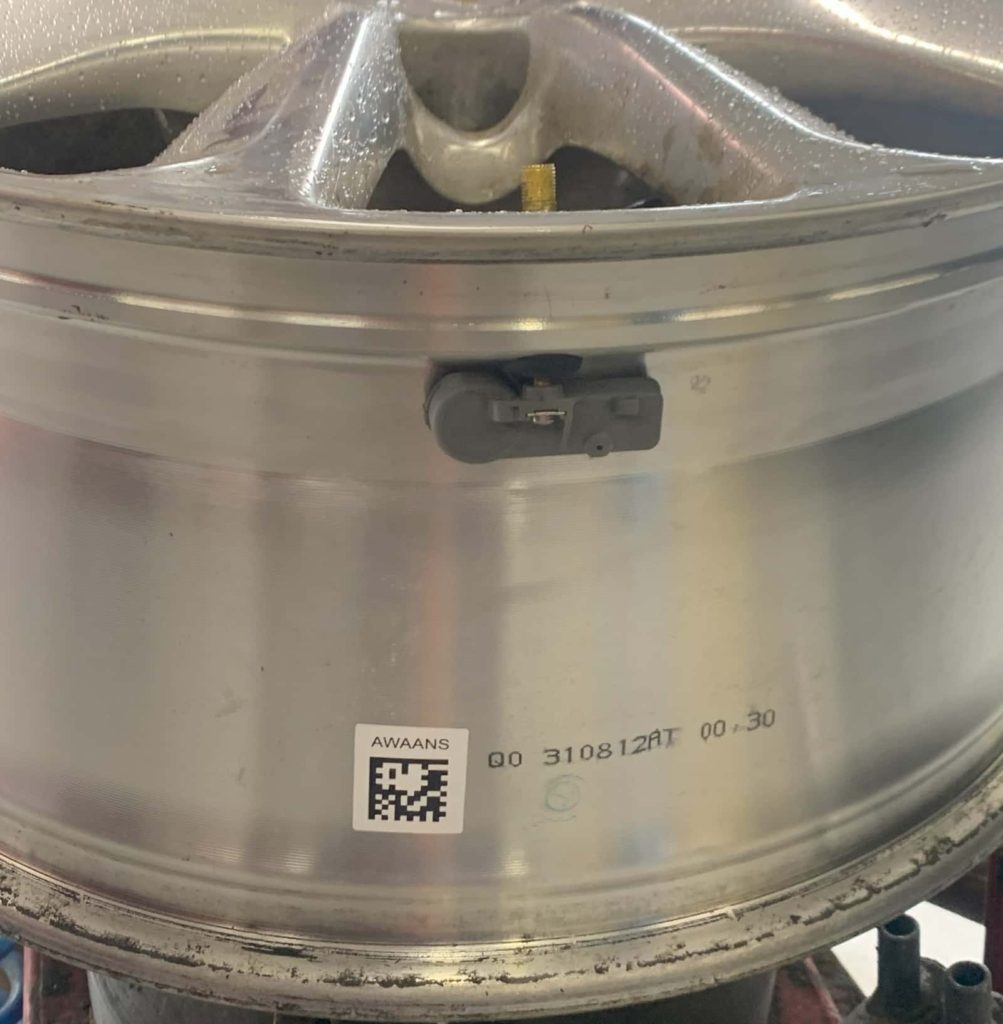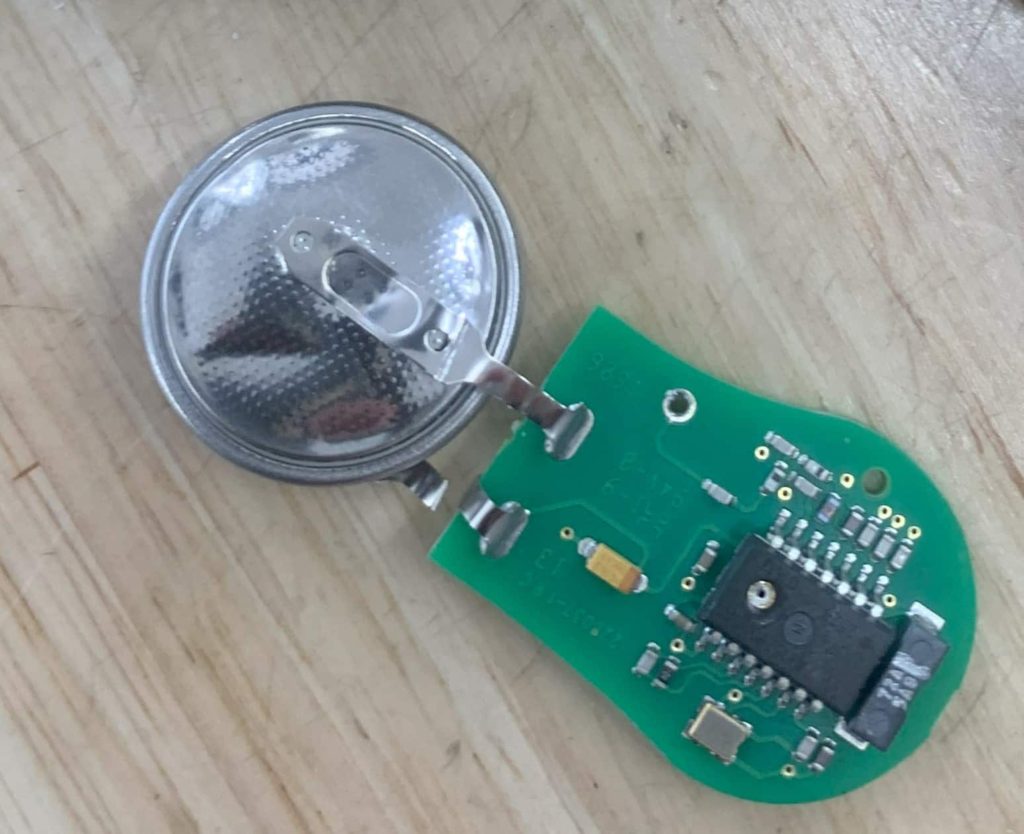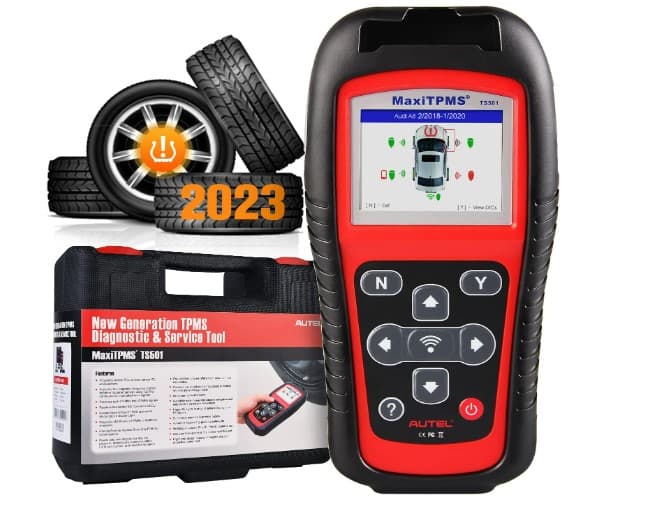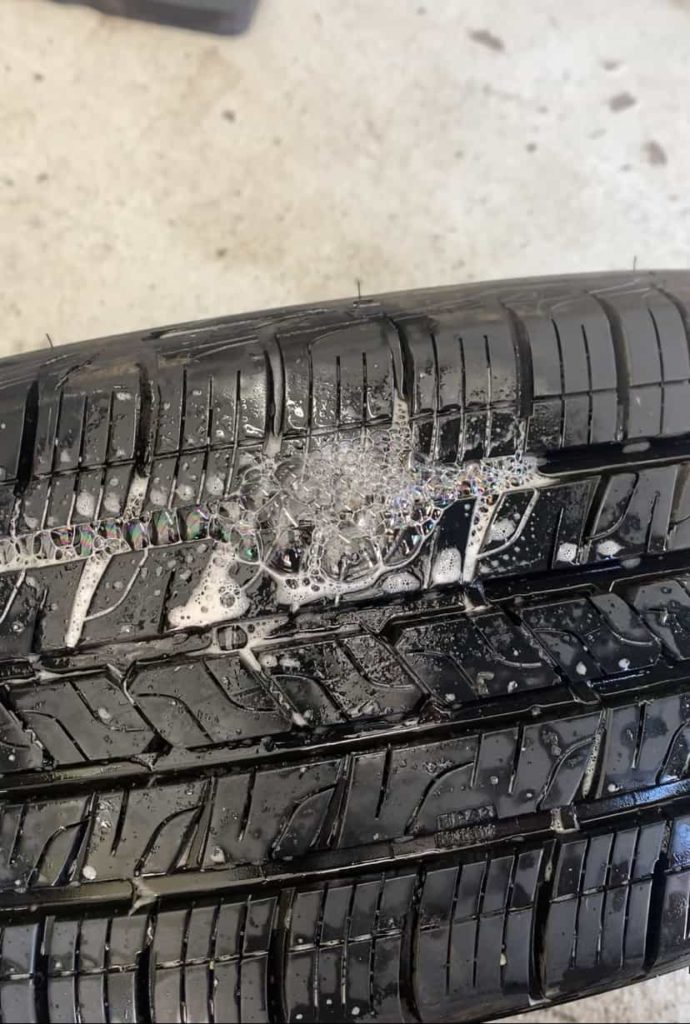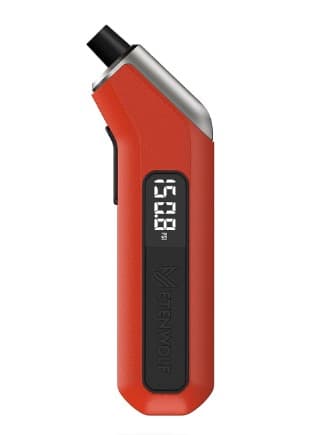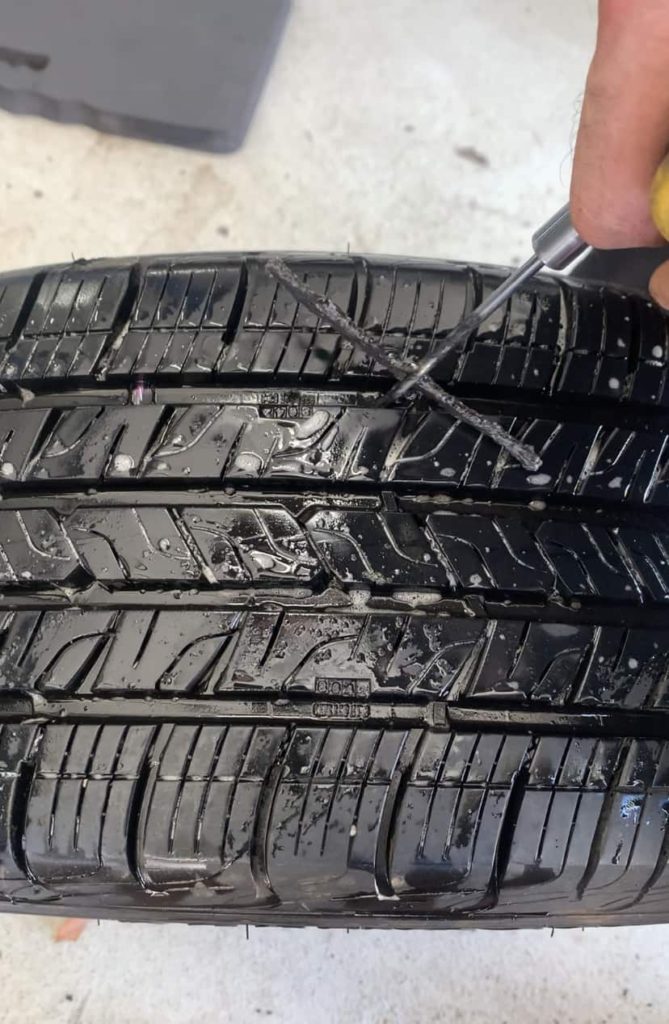What is the Ford Expedition TPMS?
Designed to flag issues with tire pressure and also indicate when the system itself is faulty, the tire pressure monitoring system (TPMS) in the Ford Expedition consists of pressure sensors in every wheel, a TPMS receiver module, and an ECU that functions as the main computer.
How Does the Ford Expedition Tire Pressure System Work?
Sensors for Tire Pressure and Temperature: Located in each tire and attached to the end of each valve stem, TPMS sensors continually monitor both the pressure and the temperature of the tire they inhabit. Each sensor has its own circuit board and utilizes a battery-powered transmitter for functioning.
Data Transmission via Wireless Signals: When the Ford Expedition is in motion or experiences a change in tire pressure, data is wirelessly sent by the sensors to a receiver module. These sensors use frequencies of either 315 Mhz or 433 Mhz to send the information through RF (Radio Frequency) signals.
Ford Expedition TPMS Receiver Module: Integrated within the SUV is another mini computer, known as the TPMS receiver module, which decodes the incoming wireless signals from the tire pressure sensors. This module then forwards the information to the Expeditions central computer (ECU)..
Central Processing Unit (ECU): The ECU is the Expeditions main computer system and evaluates the tire pressure and temperature data it receives. It compares this data to the Ford manufacturer-recommended tire pressure levels. When the tire pressure falls 15-20% below these values, a warning indicator is activated.
Dashboard Warning for Low Pressure: The low tire pressure warning lamp manifests as a yellow or orange exclamation point symbol as well as a message on the information display. There are a few different kinds of warning messages such as “Tire Pressure Low”, “Tire Pressure Sensor Fault”, and “Tire Pressure Sensor Fault”.
How to Reset the Ford Expedition Tire Pressure Light
Follow this Ford tire pressure monitoring system reset after any tire repairs, services, tire rotations, or tire/wheel replacements. Only follow this process in the exact order explained.
Drive the Ford Expedition for at least 2 minutes at speeds above 20 Mph.
Turn the vehicle ignition OFF
Turn the vehicle ignition ON without starting the engine. (turn the key to ACC mode or press the push start button twice without your foot on the brake)
Turn the hazard flasher lights ON and then OFF 3 times. (press the hazard button 6 times total)
If you follow steps 1-4 correctly, the horn will beep one time, the hazard lights will flash and a message on the display screen will indicate you are in RESET MODE. If the vehicle does not enter RESET MODE (horn beep), start over at step 1.
Hop out of the SUV and remove the valve cap from the front left tire valve stem. (driver side front)
Press the valve stem in so that you begin releasing air until the horn beeps once.(if the horn beeps twice this means you were unsuccessful and need to start over)
Go to the front right tire (passenger side front) and release air until the horn beeps.
Go to the rear right tire (passenger side rear) and release air until the horn beeps.
Go to the rear left tire (driver side rear) and release air until the horn beeps.
Get back in the SUV and turn the ignition OFF.
Inflate all 4 tires back to the recommended tire pressures.
Drive the Ford Expedition for a few minutes at speeds over 20 Mph.
Reset Tips
If you are using a trailer with tire pressure sensors in the tires, this TPMS reset procedure will also work in the trailer tires.
Using the Ford Expedition Display
How to Change Tire Pressure Units with 12 Inch Display
Select SETTINGS on the touchscreen display
Select GENERAL
Select TIRE PRESSURE UNITS
Choose desired tire pressure unit
How to Change Tire Pressure Units with 15 Inch Display
Select VEHICLE DRAWER on the touchscreen display
Select SETTINGS
Select GENERAL
Select TIRE PRESSURE UNITS
Choose desired tire pressure unit
How to View Ford Expedition Current Tire Pressures
Drive the Expedition at 20 Mph for at least a few minutes.
Using the steering wheel controls select Main Menu on the information display screen
Select Gauge Mode
Press the Right Arrow on the steering wheel to select it.
2023 Ford Expedition Tire Pressures
TIRE SIZE | FRONT PSI | REAR PSI |
275/55R20 | 39 | 39 |
275/65R18 | 35 | 35 |
285/45R22 | 39 | 39 |
What Can Cause the Ford Expedition Low Tire Pressure Light to Turn On?
Low-pressure tires
Excessively inflated tires
Tire undergoing a loss of pressure
Lack of a pressure sensor in the wheel (such as when using a spare)
Inoperative or battery-exhausted tire sensor
Malfunctioning TPMS receiver module
Nearby Ford vehicles or electronic gadgets causing signal disruption
Fluctuations in weather or height above sea level (altitude)
Excessive weight carried by the vehicle
Driving while tire chains are installed
Ford Expedition Tire Pressure Sensor Batteries
Each Ford Expedition tire features its own pressure sensor that is powered by a specialized silver-oxide battery. This battery is directly connected to the sensor’s circuit board which is sealed within a plastic case. The construction of the sensor means that you can’t merely swap out the battery; the whole sensor unit must be replaced. On average, these Ford pressure sensors endure for about 5 to 10 years or around 100,000 miles before having to be replaced with new ones.
Diagnosing Ford Expedition Tire Light Issues
When the Ford Expedition’s tire indicator is lit, there’s clearly something amiss. This could be a result of insufficient tire pressure or a malfunctioning sensor that isn’t interacting as it should with the onboard computer. If resetting the tire pressure and reprogramming the sensors hasn’t resolved the issue and the light remains on, you have 6 more options to explore:
Solution 1: Is One of Your Tires Losing Air?
If your Ford Expedition tire indicator is lit, your first course of action should be to determine if a tire is leaking air. To verify, execute the following steps:
Assess the pressure in all tires to locate the one that’s lacking in pressure.
Reinflate the low-pressure tire to the recommended level.
Drive at speeds exceeding 20 mph for around 3 minutes.
Should the light deactivate yet reilluminate later, regardless of the time frame, it’s likely that the tire in question has a leak. Once you’ve ascertained which tire is causing the issue, proceed to solution 6 to identify the leak’s origin.
Solution 2: Clear the Diagnostic Trouble Codes (DTC) From the Ford Expedition ECU
Each time your Ford Expedition’s tire light activates, this event is logged in the vehicle’s Electronic Control Unit (ECU) as a Diagnostic Trouble Code (DTC). If you wish to remove these codes, a manual ECU reset can be performed. Start by making certain that the SUV and all its electronic systems such as the radio and lights are turned off. Following that, open the vehicle’s hood and disconnect the negative cable from the 12V battery. Wait a moment and then reconnect the terminal. Your Expedition will then enter a “relearning” mode. It’s advisable to drive at an unchanging speed of 50 mph for about 30 minutes to get all the SUV sensors and computers working properly again.
Caution: Should the low tire pressure light deactivate upon reconnecting the battery but then reactivate while driving or afterward, it usually indicates that one or more tire pressure sensors are either malfunctioning or low on battery, or you have a tire leak.
Solution 3: Diagnosing a "Tire Pressure Monitoring Fault" or "Tire Pressure Sensor Fault" in the Expedition
If the tire warning message on the Ford Expedition is “Tire Pressure Monitor Fault” or “Tire Pressure Sensor Fault”, this indicates one or more tire pressure sensors are not working properly. To find out which pressure sensor is faulty, a TPMS diagnostic tool is necessary. There are many brands of TPMS diagnostic tools but they all work the same for the most part. First, the tool needs to establish communication with the Expedition by getting plugged into its OBD2 port. After that, put the tool directly in front of the left front tire valve stem and select the “trigger” or “test” function on the tool. Wait for a reply from the tool and then move onto the next 3 tires. Afterward, the TPMS diagnostic tool will give you a report on each of the tire pressure sensors. If any of the sensors are diagnosed with “low” battery or the tool cannot communicate with a sensor, that sensor needs to be replaced.
Solution 4: Reactivate a Sleeping TPMS Sensor
If resetting the tire sensors of your Ford Expedition hasn’t yielded the desired results, you might want to try reactivating an “inactive” pressure sensor. Start off by letting out around 15 Psi of air from the troublesome tire—lightly depress the valve stem core to accomplish this. Wait briefly and then pump the tire up to 5 Psi beyond the suggested pressure level. So, if the specified pressure is 35 Psi, inflate the tire to 40 Psi. Then, hit the road for several minutes, ensuring your speed exceeds 20 mph. Following this, stop the vehicle to readjust the tire pressure back to its correct value and then go for another drive to complete the process.
Solution 5: The TPMS Light Turns On and Off By Itself
When you get in your Ford Expedition for the first time of the day, the tires are considered to be “cold”. This condition can lead to a slight decrease in tire pressure. The drop in pressure could be significant enough to trigger the low-pressure warning, especially in colder climates or during nighttime lows. However, as you start driving the tires warm up which causes the tire pressure to increase and turn the tire light off. To address this, we recommend checking and adjusting the tire pressure while the tires are still cold (this is why having a portable tire inflator is great!). This is the most accurate way to measure tire pressure and can help avoid the warning light from annoyingly cycling on and off.
Note: If your only option is to fill the tires when they are warm, we suggest filling the tires by about 3-4 Psi over the recommended Psi.
Solution 6: How to Locate a Tire Leak
If you’ve figured out which Ford Expedition tire is losing air, you can easily pinpoint the leak using just four items: a tire inflator, a spray bottle, water, and soap. First off, pump the tire in question up to at least 35 Psi. Then, create a soapy solution by combining some soap and water in the spray bottle (alternatively, a product like Windex can be used). Thoroughly spray douse the entire surface of the tire with this soap-water mixture, not forgetting the valve stem. After fully wetting the tire, scrutinize it to spot any emerging tiny bubbles. These bubbles will indicate the leak’s location. Once you see the bubbles, you’ve found your leak!
Tire Pressure
Impact of Air Temperature on Ford Expedition Tire Pressure
The influence of air temperature on the tire pressure of a Ford Expedition is quite significant. Generally speaking, a 10-degree Fahrenheit shift in temperature can lead to a tire pressure change of approximately 1-2 Psi. This means if the air temperature drops 10 degrees, the tire pressure will decrease by 1 or 2 Psi. In chillier environments or during a sudden drop in temperature, this could result in a noticeable decline in Psi, potentially activating the low-pressure indicator. On the flip side, elevated air temperatures or prolonged driving can cause the tire pressure to rise, possibly leading to issues with overinflation.
How to Check Tire Pressure with a Gauge
Ensure the Ford Expedition is on a flat surface and that the tires have been sitting for at least three hours, making them “cold.”
Find the advised “cold” tire pressure levels on the white sticker inside the driver-side door.
Prepare the necessary items: a digital tire pressure gauge and a tire inflator.
Take off the valve stem cap on the first tire you plan to inspect. Keep it somewhere safe!
Push the tire pressure gauge on the valve stem to get a pressure reading.
Measure the pressure against the advised levels. If it’s below the recommended pressure, add air and then recheck it.
In case the tire is overinflated, carefully let out some air by pressing on the valve stem core and then recheck it.
Don’t forget to put the valve stem cap back on!
Conduct the same procedure for each of the other tires. Be accurate!
Is it Safe to Drive the Ford Expedition with the Low Tire Light On?
The moment the low tire pressure warning light activates, cease driving and investigate the issue. Inspect the tire visually and measure its air pressure. Continuing to drive with the warning light illuminated is risky, but to gauge the level of risk, it’s crucial to identify the reason the warning light has been triggered.
Why is the Ford Expedition Tire Light Flashing?
If the tire pressure light on your Ford Expedition is blinking, it indicates that one or more of the tire pressure sensors are failing to send signals to the vehicle’s ECU or TPMS receiver module, signaling a TPMS malfunction. This typically occurs when a sensor’s battery is either low or completely depleted, or when one or more wheels lack a tire pressure sensor. For instance, the Ford Expedition spare tire doesn’t contain a sensor, so the SUV won’t receive data from that wheel. Until the problem is resolved, the tire pressure light will flash and then remain on each time you operate the SUV.
Are Tire Plugs Reliable for Fixing Tire Punctures?
Certainly, tire plugs are highly dependable for repairing punctures in tires and I have confidence in their effectiveness in most cases. However, they shouldn’t be used if the tire’s tread is significantly worn or if the puncture is located on the sidewall of the tire.
Everything in this article is applicable to all Ford Expedition models and versions including the Ford Expedition XL STX, XLT, XLT Max, Limited, Limited Max, Timberline, King Ranch and Platinum.
Please note that this blog post contains Amazon affiliate links. This means that if you make a purchase through one of these links, we at TPMSRESET.COM may earn a small commission at no extra cost to you. We only recommend products that we personally use and believe in. Thank you for supporting us.

